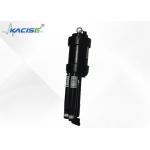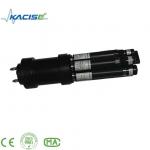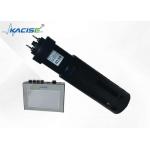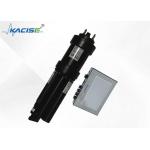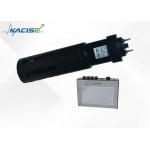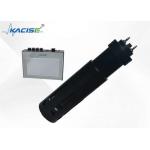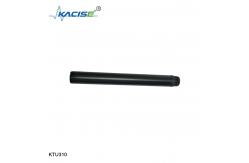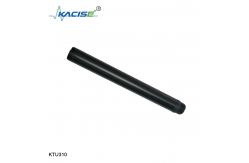KTU310 Online Turbidity Sensor 90 ° Angle Scattering Principle
Fiber Structure, Strong Anti-Interference Ability 1.PrincipleThe KTU310 integrated online turbidimeter is designed and made by
the principle of scattering light turbidimeter. When a beam of
light enters a water sample, the light is scattered by the
turbidity material in the water sample. The turbidity in the water
sample can be calculated by measuring the intensity of the
scattered light in the vertical direction of the incident light and
comparing it with the internal calibration value, the final value
is output after linearization. 2.Feature- 90 ° angle scattering principle, built-in temperature sensor
- Support RS-485, Modbus/RTU protocol
- Fiber structure, the strong anti-interference ability of external
light
- The infrared LED light source, high stability
- IP68, shield, water depth, 20 meters
- Convenient, fast, stable, and easy to maintain
3.Technical Specifications| Model number | KTU310 | | Measuring principle | Scattering method | | Range | 0 ~ 100 NTU | | Resolution | 0.1 NTU, 0.1 °C | | Precision | ± 3% or ± 2 NTU ± 0.5 °C | | Calibration mode | Two-point calibration | | Temperature compensation | Automatic temperature compensation (PT1000) | | Output mode | RS-485(Modbus/RTU) | | Working conditions | 0ー50 °C, < 0.2 mpa | | Storage temperature | - 5 ~ 65 °C | | Installation mode | Immersion mounting, 3/4 NPT thread | | Power consumption | < 0.05 W | | Power supply | 12 ~ 24 VDC ± 10% | | Protection level | IP68 |
4.Dimensional Drawing
Tips: Historical Turbidity Measurement Method
The Jackson Candle Turbidimeter used attenuation to determine
turbidity.
The historical method for measuring turbidity was the Jackson
Candle Turbidimeter. Developed over a century ago, this instrument
was constructed from a candle and a flat-bottomed glass tube. Much
like a transparency tube, water is poured down into the tube until
the candle flame is no longer distinctly visible 2. The light does
not disappear completely, only the image of the flame will. This
occurs when the intensity of the transmitted light is equal to the
amount of light scattered by particles in the water. The more
turbid the water is, the quicker the image of the flame disappears.
The Jackson Candle Turbidimeter was the first practical attempt to
quantify turbidity. In addition to the instrument, a standard
suspension was developed, allowing the tube to be “calibrated” to
the user’s eye 31. While the scale of the turbidimeter was in
ppm-silica, units for this instrument were called Jackson Turbidity
Units (JTU). After formazin was invented in 1926, it was used as a
new calibration standard for this method, and Formazin Turbidity
Units (FTU) were adopted 31. However, even with the improvement in
standards, this method was limited in scope. The Jackson Candle
Turbidimeter could not detect turbidity levels below 25 JTU 2,31.
It was also highly subjective as readings were based on human
observation. This introduced errors based on personal perception
and judgment. Other light-extinction based turbidimeters were
developed, but they remained dependent on human eyesight 31. Today,
these methods are considered obsolete in favor of turbidity
instruments (such as meters and sensors) that offer an increased
measurement range and improved accuracy.
|
